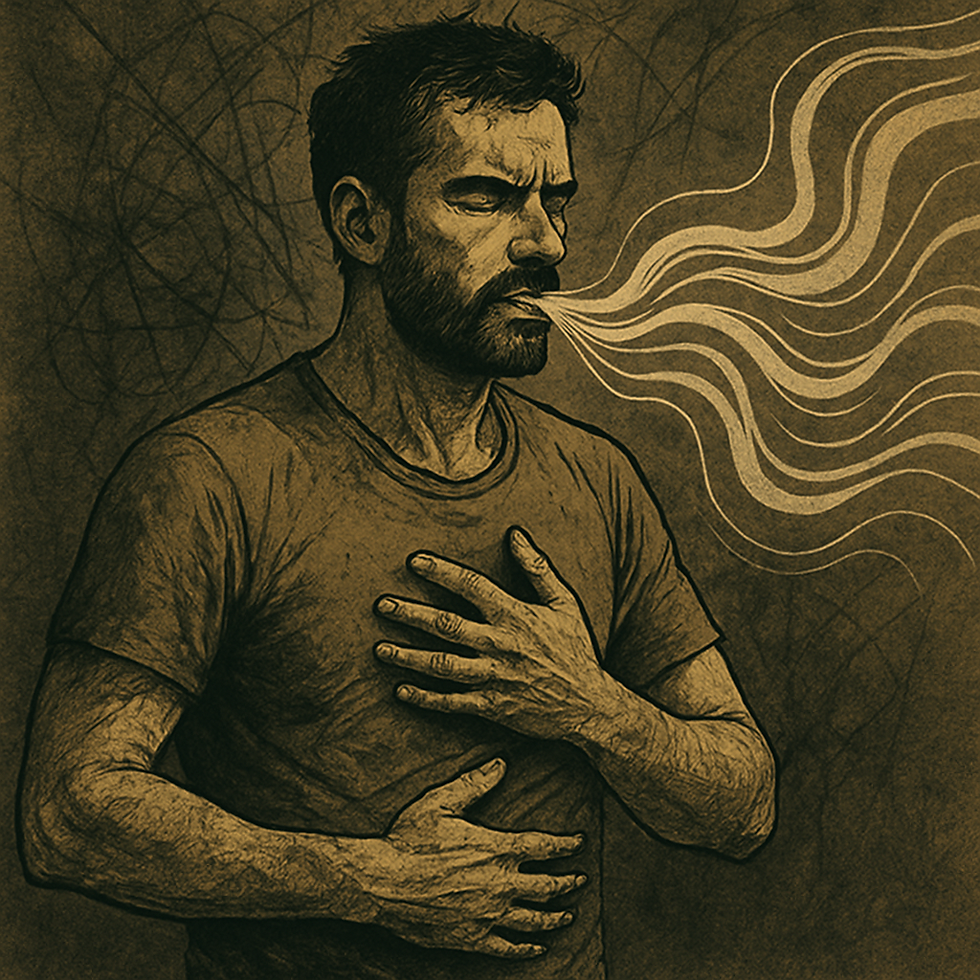Somatic Literacy: A Path to Reconnection and Healing for Men
- Matt Stewart

- Nov 14, 2024
- 4 min read
Somatic literacy, at its core, is the ability to understand, interpret, and effectively communicate with your body. It involves tuning into the subtle sensations, emotions, and signals your body is constantly sending and using that information to guide your decisions, actions, and overall well-being. For men, this skill is not just beneficial—it’s transformative. In a world where emotional awareness and bodily connection are often dismissed or devalued, somatic literacy becomes a powerful tool for healing, especially when addressing wounds like the brother wound.

The Brother Wound and Disconnection from the Body
The "brother wound" refers to the unspoken pain and disconnection many men feel in their relationships with other men—whether it's due to competition, betrayal, or the inability to express vulnerability. This wound often manifests as emotional repression and disconnection from one's body. Instead of processing feelings of sadness, anger, or fear, we numb ourselves or channel them into socially acceptable outlets like overwork, aggression, or escapism.
For me, this disconnection began early. Growing up, I was labeled "too much"—too emotional, too erratic, too loud. By my teenage years, I was diagnosed as bipolar and placed on medication. While those medications stabilized the extremes of rage, ecstasy, fear, and despair, they left me feeling numb most days. I didn’t know what was happening inside me unless it screamed for my attention. Sensations like tension or unease were drowned out until they became all-consuming or paralyzing.
When I decided to come off medications over 20 years ago, I faced an unexpected challenge: I had to relearn how to feel. The numbness didn’t magically disappear—it was replaced by confusion and a sense of being a stranger in my own body. For years, I worked to understand the subtle signals my body was sending me. I still do. It’s not easy, but it’s necessary.
Why Somatic Literacy Matters for Men
We live in a world that prioritizes the mind. The mantra is: "Your mindset is everything." If there's time, we’re told to connect with our emotions, but only to the extent that they don’t make us appear weak. Rarely, if ever, are we encouraged to tune into our sensations—the foundation of somatic literacy. This top-down approach to healing—mind, emotions, then body—is backwards. It’s time to flip the script with a bottom-up approach: sensations, emotions, then thoughts.
Here’s why this shift is vital:
Healing Trauma - Trauma lives in the body. You can’t think your way out of a stress response or will your body to stop clenching in fear. Somatic literacy allows you to sense where the trauma is stored and begin to release it.
Emotional Regulation - Many men struggle to identify their emotions because they’re disconnected from their sensations. By first noticing physical signals—tight shoulders, a fluttering stomach—we can begin to name and process our emotions, leading to greater emotional clarity and regulation.
Embodiment - To embody traits like courage or joy, we must first clear the unprocessed sensations and emotions that crowd our internal space. Somatic literacy helps us honor our body’s needs, making room for the qualities we want to cultivate.
How to Build Somatic Literacy
Developing somatic literacy requires practice. Here’s a simple exercise to get started:
1. Start with Sensations
Pause and ask yourself: What am I sensing? Tune into the physical sensations in your body. Notice the subtle details.
"I am sensing an ache in my lower back."
"I am sensing tension in my jaw."
"I am sensing cold feet."
Avoid judging or explaining these sensations. Just observe them.
2. Identify Emotions
Next, ask: What emotions are present for me? This part is hard, but it’s essential. Keep it simple:
"I feel sad."
"I feel content."
"I feel anxious."
Resist the urge to dive into the story behind the emotion. That comes later.
3. Acknowledge Thoughts
Finally, tune into your thoughts: What am I thinking? Identify the stories your mind is creating:
"I am thinking I’m overwhelmed with work."
"The story I’m telling myself is that I’m unworthy."
4. Connect the Dots
Once you’ve explored these layers, notice how your sensations influence your emotions, and how your emotions shape your thoughts. For example:
Tension in your jaw → frustration → thoughts of being unappreciated.
This process creates awareness, helping you understand the intricate dance between your body, emotions, and mind. From this place of clarity, you can begin to respond to your needs instead of reacting to your circumstances.

My Journey Toward Reconnection
For years, I didn’t know how to process what I was feeling because I didn’t even know where to start. I was living in my head, constantly wrapped in stories about who I should be or how I should act. Learning to feel again—starting with the subtle sensations in my body—was like learning a new language. It’s still a struggle some days, but it’s worth it. Somatic literacy has allowed me to heal old wounds, reconnect with my true self, and build healthier relationships with others.
A Call to Action
Men, we’ve been taught to disconnect from our bodies in the name of strength. But true strength comes from understanding and honoring what’s inside us. Take 5-10 minutes today to tune into your sensations, name your emotions, and observe your thoughts. Start small, but start.
Relearning how to process life from the ground up isn’t just a personal journey—it’s a revolution. Together, we can heal the brother wound, reconnect with our bodies, and embody the qualities that make us whole. Are you ready to begin?



Comments